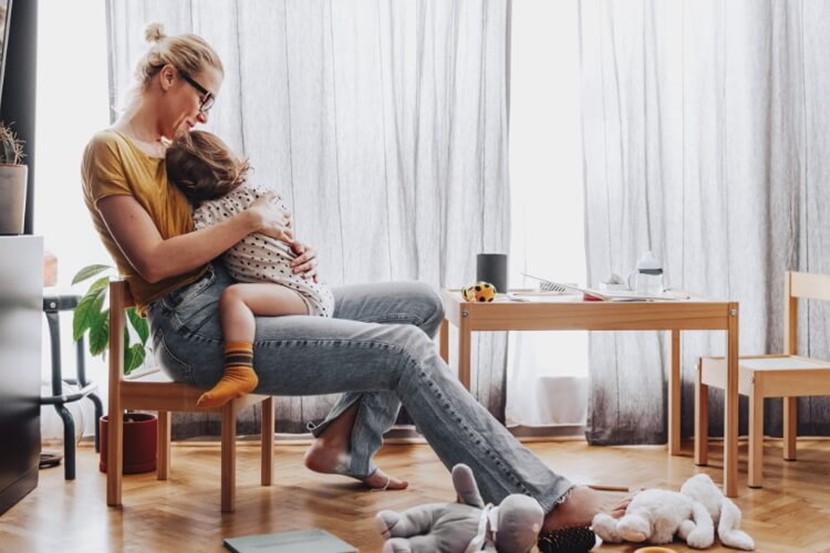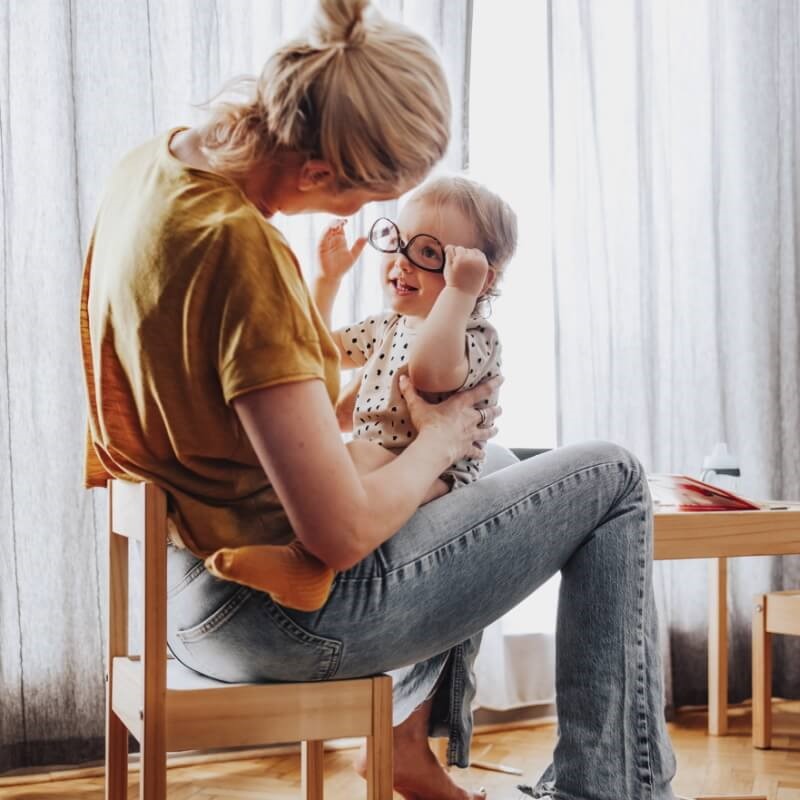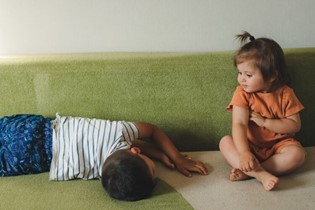How can you help bolster your child’s resilience?

Anxiety, mood difficulties, and low self-esteem are all things we’d love to protect our children from ever having to experience. Some influences are out of our control, but what are the conditions we can surround them with, to raise our little ones to grow into healthy and resilient teens?
I’m a victim of the current indoor plant obsession. Thankfully, most of my plants do okay, but some droop from time to time. Some (maidenhair fern, I’m looking at you!) are vulnerable to even slight changes in conditions, and some (bless you, cacti) are bulletproof and take even heat-pump-wind in their stride.
Kids are a little like plants. Some are more fragile and others are pretty robust, for all sorts of reasons that relate to both nature and nurture. Some children have seasons where they ‘droop’ a little and need extra care. I love what fellow psychologist Dr Sanah Ahsan wrote in a recent piece for The Guardian in the UK. She pointed out that if a plant is not thriving, we don’t diagnose it with 'Wilting Plant Syndrome', we look to what conditions it is growing in, and think about what it needs. We check its conditions – how much light, moisture and nutrients it has.
The conditions that kids need to thrive include a safe, warm, and dry place to live, enough food, and reliable people who love them. But over and above these fundamentals, there are also things we can do as parents to create emotional and social conditions for our kids to flourish, acknowledging that we won’t get it right all the time, and that’s okay.
COTTON WOOL
Particularly when children are tiny, our instinct is to wrap them up and protect them from the tough stuff. Unfortunately, encountering challenges and hardships are par for the course in life; days when even the most hardy cactus is wilting in an onslaught of 30 degree heat pump wind. My definition of resilience is the ability to navigate these challenges, and recover well. Resilient kids often have good social and emotional ‘literacy’, which can help buffer against the effects of life’s knocks. This kind of literacy includes things like being able to navigate their own big emotions, recognise and respond to others’ emotions, build and maintain relationships that are respectful, and develop solid coping skills.
But sometimes there’s a problem that simply needs to be sorted. If a child is being harmed, we shouldn’t aim to foster their resilience, we should sort out the problem. Struggling or feeling very anxious in those situations makes perfect sense and may actually be helping to keep them safe.
SNOWPLOUGH
Stepping in is important when there’s a problem that’s beyond the child’s ability to solve. But 'snowploughing' and clearing the way of all challenges is often unhelpful. While your instinct might be to shield your child from tough times, allowing them to experience frustration or disappointment may actually be good for their development. We all need the ability to tolerate low-ish levels of frustration, disappointment or distress, to wobble a bit and recover and move forward. And allowing your child to experience this in small ways, with your support, can teach them that you have confidence in their ability to navigate this, and you’re here if they need you. It promotes something called self-efficacy, which enhances resilience.

EMOTIONAL CUPS
Everyone has some resilience. It’s often described as a cup, tank, or bucket – these can be topped up. We want the bucket to be filled to overflowing, so that when life events drain a little, there is still plenty left. Another way to think of resilience is like deposits in the bank. As parents, we can make daily deposits into our child’s emotional bank account, so that when life makes withdrawals, they don’t go into overdraft. Short stints each day of child-led play (5 mins is enough), just following along with their lead, praising things (sharing, gentle hands, creativity) and describing what they’re doing (so they know you’re paying attention) is one practical way to make a deposit in the bank each day.
REPAIR SHOP
Our own experiences of being parented, the stress we’re experiencing, how much support we have access to, and the needs of our children are all factors that can influence how our relationship with our children shapes up. The good news is that ‘good enough is good enough’. Of course there will be moments when you say or do things that you regret. The key is to help your child to make sense of this. Think of it as relationship repair. It’s especially important for younger children, who don’t have the developmental ability to understand that they didn’t cause your sadness or anger. So, seemingly simple statements like “I’m feeling angry about something that happened at work, not because of you. Even when I’m grumpy, I still love you. Soon I will feel better” can help children make sense of things, and repair any relational rips.
TUNE IN
There’s a feature of the parent-child relationship that we call attunement. It’s paying attention to the inner world of your child. Tuning in to where your child is at can really help you to have sympathy or compassion for their position. So, next time your child misbehaves, instead of focussing on what they did, think about what function that behaviour might have had in that moment. What did he need, that he tried to get with a bit of a silly strategy? A child ‘lying’ about a sore tummy (when they’re just fine) might be seeking nurture, comfort, hugs or respite from a situation that feels overwhelming. A child trying to rip her sister’s certificate might be feeling insecure or inferior. Try to figure out what the deeper function of the behaviour is and tune in to where they are at emotionally.
EMOTION LITERACY
Sophie Havighurst, a Professor at The University of Melbourne who has dedicated her career to the prevention of behavioural and emotional problems for children, uses something called emotion coaching. Her research has led to a series of evidence-based steps for fostering healthy emotional development.
First, she suggests that parents need to notice emotions in their child. Tune in to facial cues, body language and any sounds or words they’re using. Next, see these emotions as an opportunity to both connect and teach (not something to fix, or stop). Then, try to hold empathy and communicate acceptance of the emotion (not necessarily the behaviour) by validating it – simply ‘stepping into their shoes’ and communicating that it makes sense that they feel that way. The next step is to name and reflect their emotion (this one often works inter-changeably with the previous step). And finally, problem solving and limit setting: often the earlier steps have taken the intensity out of the emotion, and your child might be able to figure things out themselves, especially with the emotional scaffolding you’ve provided. You don’t need to jump to problem solving too quickly, as sitting with the feeling is important. But after noticing, accepting, and naming, sometimes kids need support to figure out what to do next, now that they’ve calmed down a little. Perhaps someone needs an apology, or something needs to be put back where it belongs.
MINDSETS
Parents often worry about their children’s futures. Does snatching that toy in kindy mean that he’ll grow up to be aggressive? Does telling porkies mean that she’ll deceive and manipulate her way through life? I think the least helpful thing we can do is have our parenting hijacked by fear. The emotional lens we view our children’s behaviour through can really influence how we parent.
For toddlers, some aggression, lying and non-compliance with instructions is perfectly developmentally normal. But if we panic and view it as evidence of a bigger problem, it drives us to respond less effectively. A practical example: four-year-old Sam was the only one in the room when the last three biscuits disappeared, and he has chocolate and crumbs around his mouth. Mum enters, and asks the obvious question (that we all ask, even when we know the answer): “Sam, did you eat those biscuits?!”, and Sam replies with a confident “No!”. Mum’s view of this situation might go in a few directions. She might worry that Sam shows no remorse, is clearly lying, and is manipulating the situation for his own gain. Her mind tells her that Sam is just like [insert name] and he’ll turn out the same if she doesn’t DO SOMETHING. Her response may then be way out of proportion to what Sam needs to learn. Simply because she’s driven by fear or 'What if he keeps doing this… what will people think of him… what will people think of me…'.
Another possibility is that Mum calmly concludes 'He clearly ate them. Four-year-olds do this sometimes. It’s not okay but I get it, they’re tempting. How can I help him learn?'. Effective parenting strategies are more likely to flow from this view of things.
A FINAL WORD
While parents can absolutely do things to help bolster their child’s resilience, it’s not a parent’s fault if their child does struggle. There are many things outside of our control. We can only do our best to equip them with the skills they need. And the good news is that even if our wee ones do droop for a season, their deep roots will usually mean that they’ll recover well.
Dr Melanie Woodfield is a clinical psychologist who works within public child and adolescent mental health services in Auckland, and is a researcher at the University of Auckland.

AS FEATURED IN ISSUE 60 OF OHbaby! MAGAZINE. CHECK OUT OTHER ARTICLES IN THIS ISSUE BELOW

















